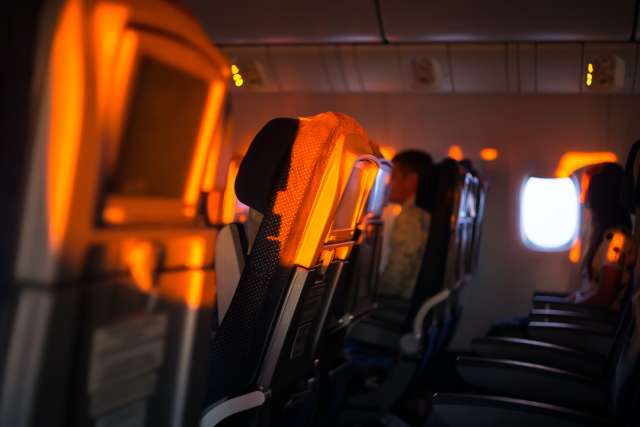Dear Doctors: We are flying overseas, and although I would love to snooze through most of the 15-hour flight, I’m generally not able to sleep on a plane. Melatonin doesn't work for me. I’ve taken Ambien in the past, but I’m concerned about the negative effects I’ve read about. Do you have any advice?
Dear Reader: Long-haul flights can be arduous. Unless you've splurged on the pricey luxury of lie-flat seats, you're faced with sleeping conditions that are less than optimal. This includes being packed into close quarters and being seated upright with limited legroom and minimal privacy. Add in the 75 to 85 decibels of ambient aircraft noise -- that's in the neighborhood of a hair dryer or a vacuum -- and falling asleep becomes a real challenge.
Some travelers swear by melatonin, a hormone secreted by the brain in response to darkness. Melatonin influences the rhythms of the internal 24-hour clock, and it plays a role in preparing the body and brain for sleep. While melatonin can be helpful in setting the stage to slip into sleep, it does not act as a sedative. That effect is conferred by prescription sleeping medications.
Prescription drugs can induce sleep, but they have potential side effects. These include lingering dizziness, fatigue or grogginess upon awakening. Some types of prescription sleep medications can result in abnormal sleep-related behaviors, such as sleepwalking.
Although occasional use is considered to be safe, these drugs have addictive and abusive potential and should be taken with caution. If someone opts for a sedative, we encourage using a trial dose at home, prior to the flight, in order to ensure tolerance. Anyone using a sleep medication should time the dose in order to have a few waking hours at the end of the flight. This provides a window of time to recover from any grogginess or other possible aftereffects.
Whenever discussing sleep, it's important to remember that the physical environment plays a role. Dress in comfortable, loose-fitting layers, as plane interiors have wide swings in temperature. Studies show that swapping your shoes for a pair of thick, warm sleep socks can speed the onset of sleep and help you sleep longer. Ear plugs or noise-canceling headphones to mitigate engine noise, along with a well-fitted sleep mask, improve your chances of dropping off and staying asleep. Lavender oil, which is soothing and calming, has been found to increase slow-wave sleep. That's the refreshing deep sleep we all hope for.
Given the limited degree that most aircraft seats can recline, passengers need to get creative about finding a comfortable position. This includes using a neck pillow that will provide complete support and keep your head from bobbing. Creating a footrest with a carry-on or other device can not only ease discomfort, but it can help prevent blood clots.
Standard sleep hygiene also applies. That means abstaining from screens, caffeine and alcohol, each of which can interfere with the onset of sleep, and also sustained sleep. And when you're not asleep, remember to get up periodically to walk and stretch, and to counteract the dry airplane air by drinking plenty of water.
(Send your questions to [email protected], or write: Ask the Doctors, c/o UCLA Health Sciences Media Relations, 10960 Wilshire Blvd., Suite 1955, Los Angeles, CA, 90024. Owing to the volume of mail, personal replies cannot be provided.)





